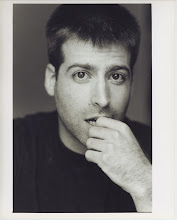Heidegger, Martin. “The Age of the World Picture”. In The Question Concerning Technology and Other Essays. NewYork: Harper & Row, 1977.
The modern age is defined, according to Heidegger by a set of phenomena that take part in the particular experiencing of this age and differentiate it from medieval age and classical (ancient) times: science, technology, art as perceived through subjective judgment, the invention of culture, and the loss of the religious experience of god. The one phenomena he chooses to focus on in his phenomenological observation is science as the foundation for the apprehension of the other phenomena of the modern age.
Heidegger claims that science in the modern age is essentially defined through research. One of the essences of research is defined by the exactitude of the science. He takes physics as an example, and shows that certain procedures and knowledge that make for the research as a whole rely on the exactitude of basic mathematical calculations of spatio-temporal principles. In contrast, science that deal with living things (social science and humanities) must not be exact.
Methodology, the second essence of research, is the means through which facts can be represented and clearly explained. This explanation is achieved through investigation that in the natural sciences means experimenting. At the essence of an experiment lies the a hypothesis that needs to be confirmed or disproved. This hypothesis is built into the procedures that, within an institutionalized science, become a tool to justify the specific world view developed by the specific science. Thus the sciences secure the objectivity and objectifying of whatever they research – be it physical phenomena or history. This objectifying is done through a specific representation of the thing at hand, which cannot be misinterpreted. This kind of representation is at the essence of the methodology of research and, therefore, of science. This was originally set in the writings of Descartes and permeates through all of modern science.
Since this way of representation is at the essence of modern science, and modern science is the fundamental determinate of the modern age, the very essence of the modern age lies in representation.
This representation establishes the interplay of subject and object as its core and creates the world picture. This picture is not an image of the world, but it is the world as perceive and apprehended wholly by “Man” [sic] as subject. Humans are also represented in the world, as part of the world; but, in decisively positioning themselves within the world picture, and in front of it, humans take part in determining their relationships with its objects. Thus, humans as subjects to which the world is represented as subjective experience takes precedence over other positioning of humanity.
“The fundamental event of the modern age is the conquest of the world as picture. The word “picture” now means the structured image that is the creature of man's [sic] producing which represents and sets before. In such producing man contends for the position in which he can be that particular being who gives the measure and draws up the guidelines for everything that is. Because this position secures, organizes and articulate itself as a world view , the modern relationship to that which is, is one that becomes, in its decisive unfolding, a confrontation of world views.” (134)
